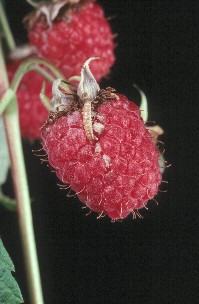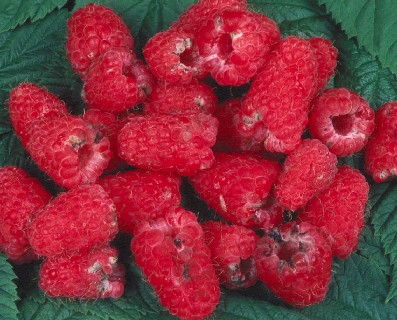
The raspberry beetle (Byturus tomentosus) is a major pest of cultivated raspberry and hybrid berries in many countries of Europe and are frequently found in fruits of wild raspberries and blackberries. The adult beetles over-winter in the soil and emerge in spring before raspberry flowers have opened. They initially feed on the leaves of the growing tips of young primocane that can result in extensive damage to the leaves.

Some adult beetles will fly to other hosts and others may move to feed on developing flower buds. In the laboratory, the threshold for flight has been established at 15oC. In the field when the temperature exceeds this threshold adults fly to apple (Malus domestica), plum (Prunus domestica), cherry (Prunus sp.), and hawthorn (Crataegus spp.) where they feed on open flowers before returning to raspberry to feed and complete their life cycle. This shows that adult beetles are strongly attracted to volatiles from flowers of host plants.
Two biologically active volatile components have been identified and are currently being evaluated in field and laboratory trials. The larvae cause the most damage, either by browsing on the surface of drupelets on the fruit or tunnelling into the receptacle.
 Damaged fruit may become infected by botrytis (Botrytis cinerea) reducing the storage time of the ripe fruit. In commercial plantations control usually involves application of insecticides just before the first flowers open to kill the adult and sometimes followed by a second in the interval between 80% petal fall and the first pink fruit stage. The use of insecticides close to fruit harvest is now becoming increasingly unacceptable because of the potential risk of residues.
Damaged fruit may become infected by botrytis (Botrytis cinerea) reducing the storage time of the ripe fruit. In commercial plantations control usually involves application of insecticides just before the first flowers open to kill the adult and sometimes followed by a second in the interval between 80% petal fall and the first pink fruit stage. The use of insecticides close to fruit harvest is now becoming increasingly unacceptable because of the potential risk of residues.
